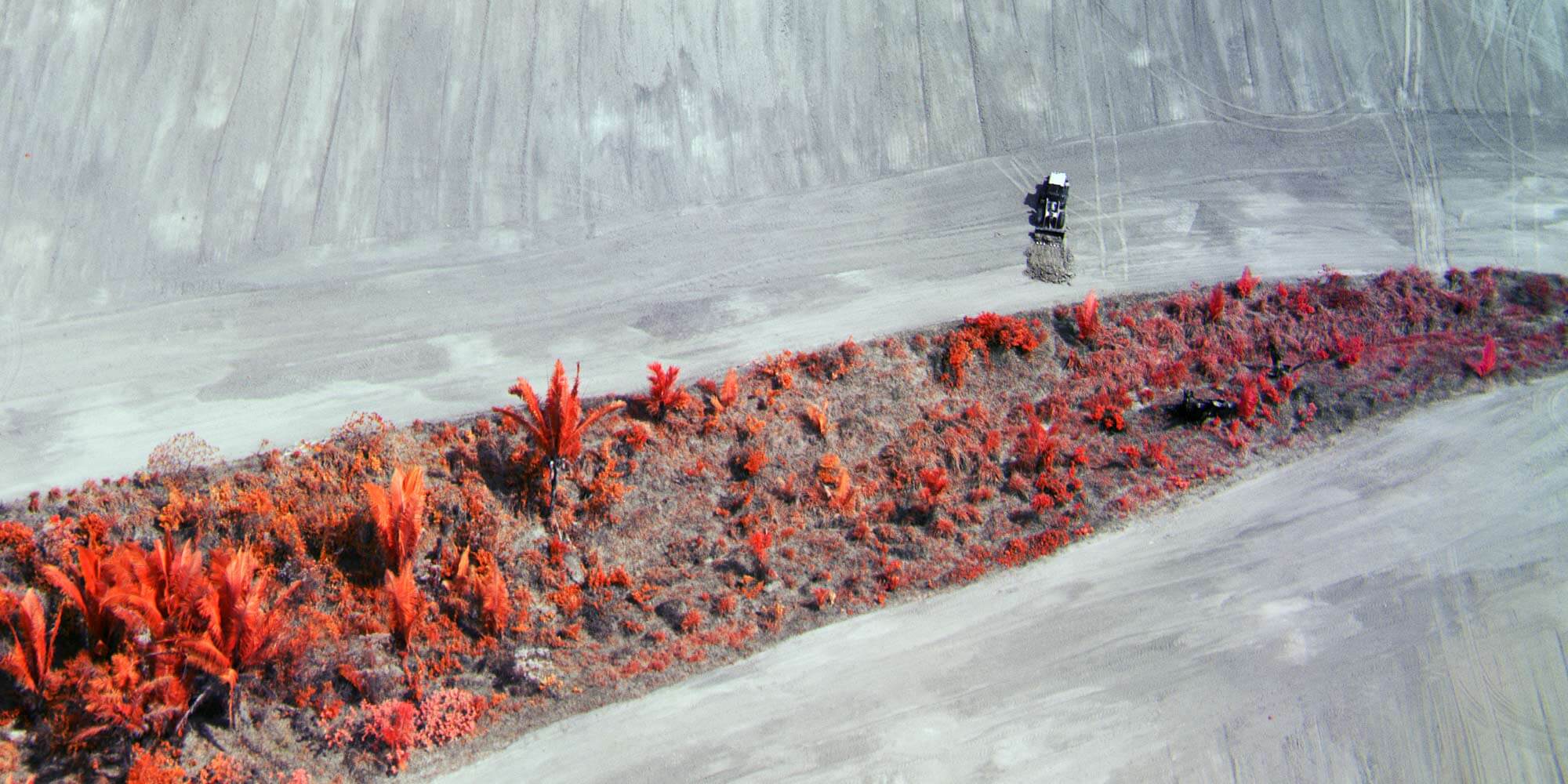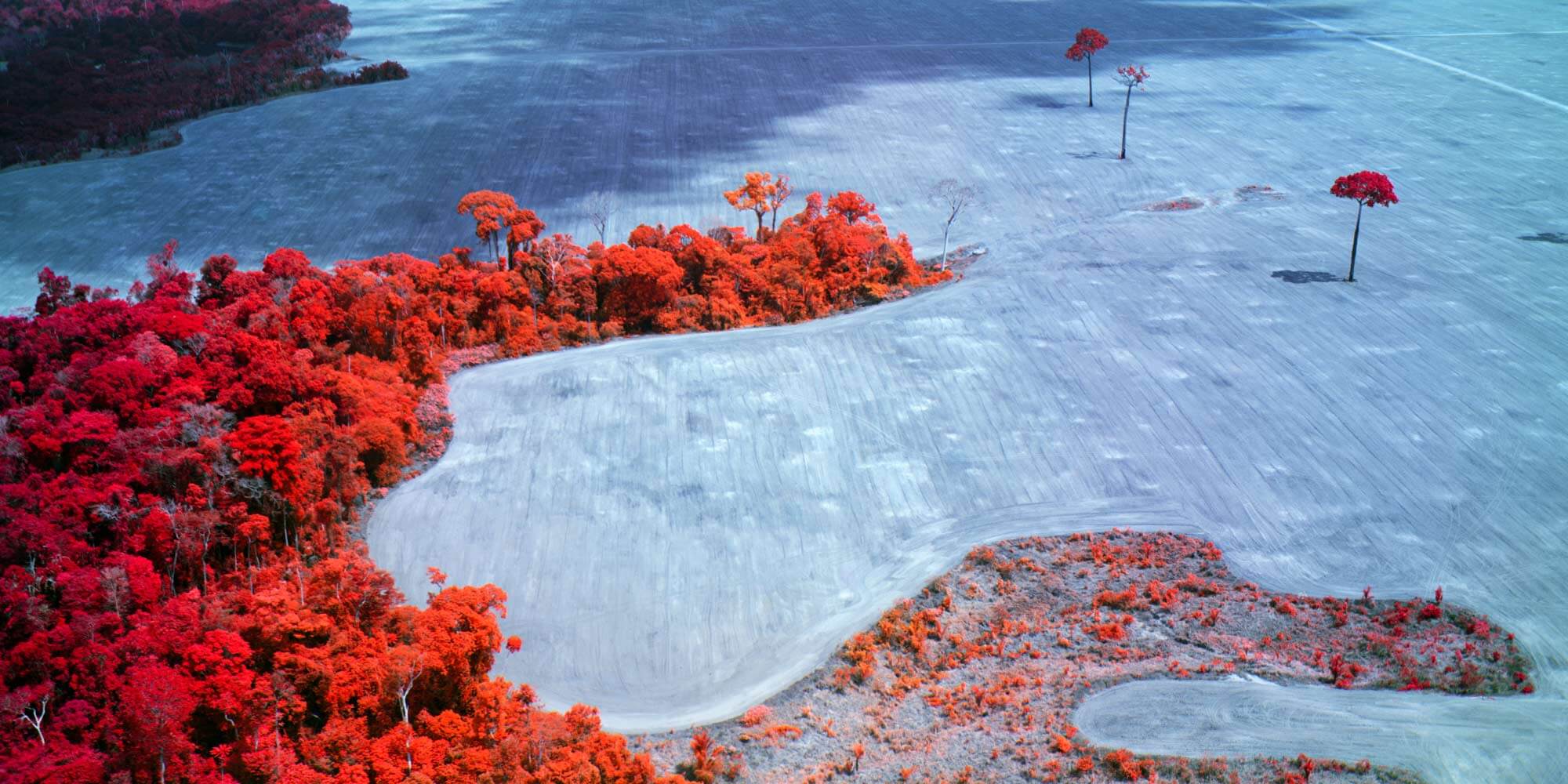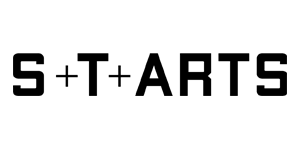Grand Prize – Innovative Collaboration
Broken Spectre is a disquieting portrait of willful environmental catastrophe along the Trans-Amazonian Highway told through a kaleidoscope of scientific, cultural, historic, socio-political, activist, and anthropological filters. This dream-like immersive video forms an extensive record of widespread yet unseen fronts of deforestation and industrialized ecocide in the Amazon Basin, unveiled using a range of powerful scientific imaging technologies. Through abrupt leaps in scale and medium, the film reveals unsustainable processes of extractive violence: illegal logging, mass burning, wildcat goldmining, the theft of Indigenous lands, species extinction, flooding and damming of rivers, and the forest’s colonization.
For decades, scientists have harnessed advanced forms of remote sensing photography to understand the forest’s degradation, model tipping points and reveal impending environmental catastrophe in the Amazon. Broken Spectre is an attempt to dial in on these opaque subjects using similar scientific imaging technologies, aggravated media that carry some agency in the biome’s destruction, as they are also used as tools of resource extraction by mining and agribusiness interests.
Three separate media were employed, each at a particular scale. To capture the burning forest, an aerial multispectral camera was invented in collaboration with a spectroscopy and machine vision company. For the close-up scenes shot on the floor of the cloud forest at night using ultraviolet lights, the film borrows scientific techniques of UV microscopy to produce reflective and fluorescent UV macro timelapse footage of the forest’s biome. At the scale of the human figure, in scenes depicting the processes of environmental crimes, analogue motion picture S35mm B&W infrared film was shot using x2 anamorphic lenses. Aside from scenes in the seminal 1964 film Soy Cuba, this is perhaps the only use of infrared film in the history of cinema. Mosse regards this overlap as a fertile space for a film about environmental destruction, because the camera can measure the extent of forest degradation and dieback.
The film was made with an inclusive and collaborative approach, including key scenes made in collaboration with the Yanomami and Munduruku communities, the ATL Conference, and additional guidance from the Suruí, Kaingang, and other Indigenous communities.
Credits
Director, producer: Richard Mosse
Cinematographer, editor: Trevor Tweeten Composer, sound design: Ben Frost Digital colorist, post-production: Jerome Thelia Film processing and studio manager: Matthew Warren Film processing advisor: Cary Kung Film processing assistant: Kimin Kim Film scanning: Metropolis Film Lab Fixer, translator, driver: Gabriel Uchida Fixer, translator, driver: Alessandro Falco Fixer, translator, driver: Marco Lima Fixer, translator: Gabriel Bogossian Fixer, translator: Alejandro del Solar Bravo Production assistant: Diana Morales Ocegueda Driver: Edimar Tozzo Helicopter: Aereo Especial Multispectral camera engineer: Jeffrey Carson, Spectral Devices 35mm camera rental: Hand Held Films Sound engineer: Mike Amacio, Carlos Boix Advisor: Jon Lee Anderson Cloud forest guides: Alex Guevara, Arlette Arn Yanomama translator: Ana Maria Antunes Machado
Broken Spectre was co-commissioned by the National Gallery of Victoria, VIA Art Fund, the Westridge Foundation, and the Serpentine Galleries. Additional support was provided by Collection SVPL, Jack Shainman Gallery, and Arts at CERN.








